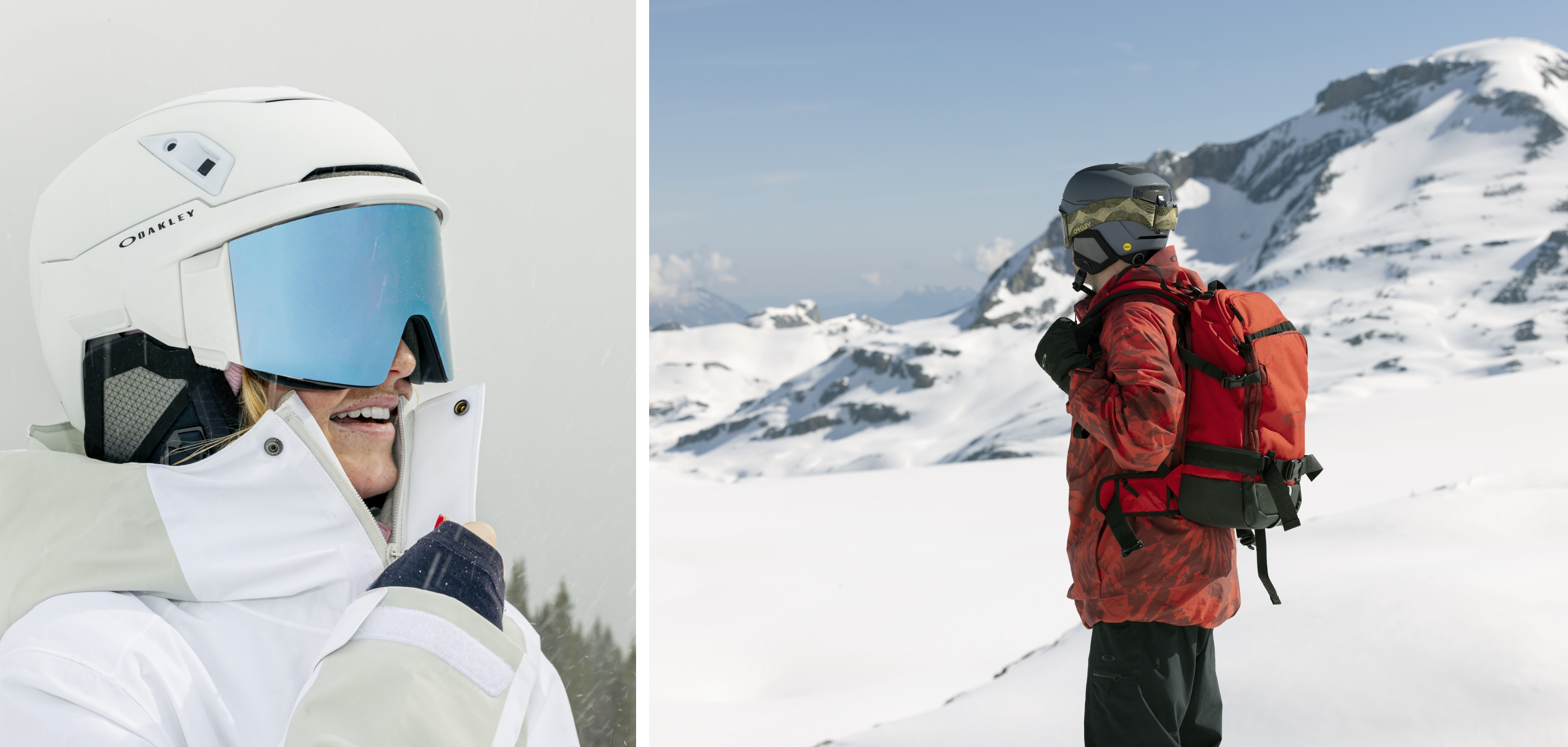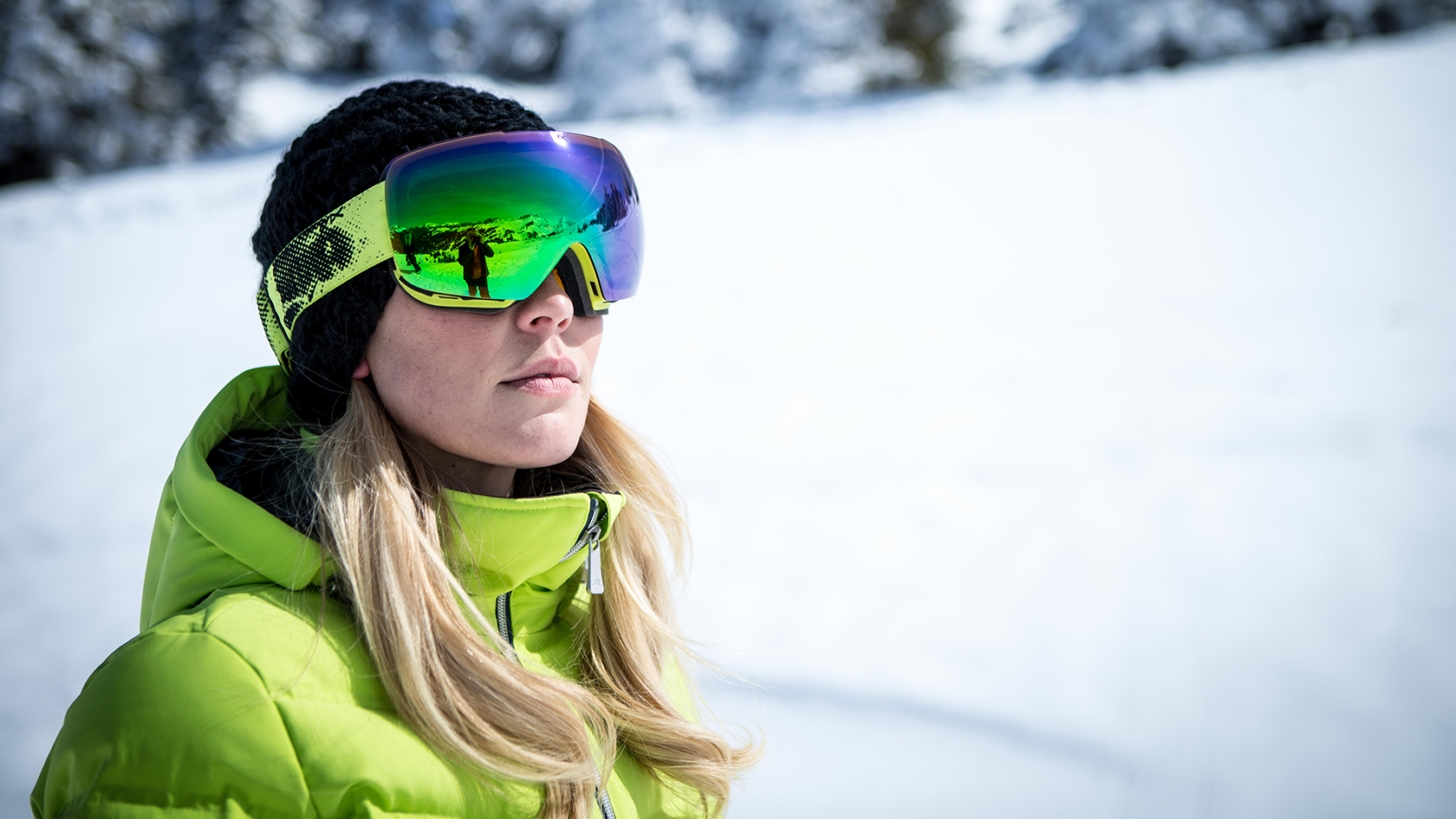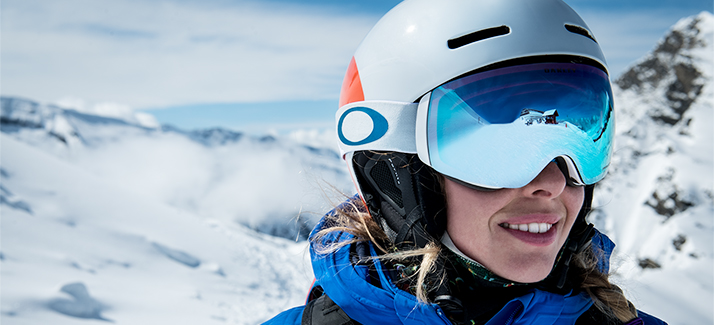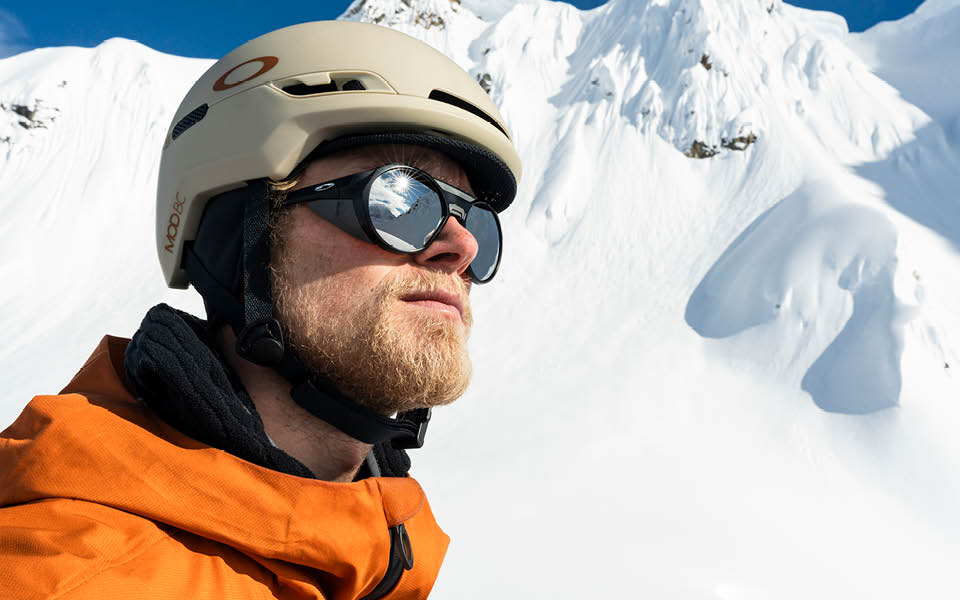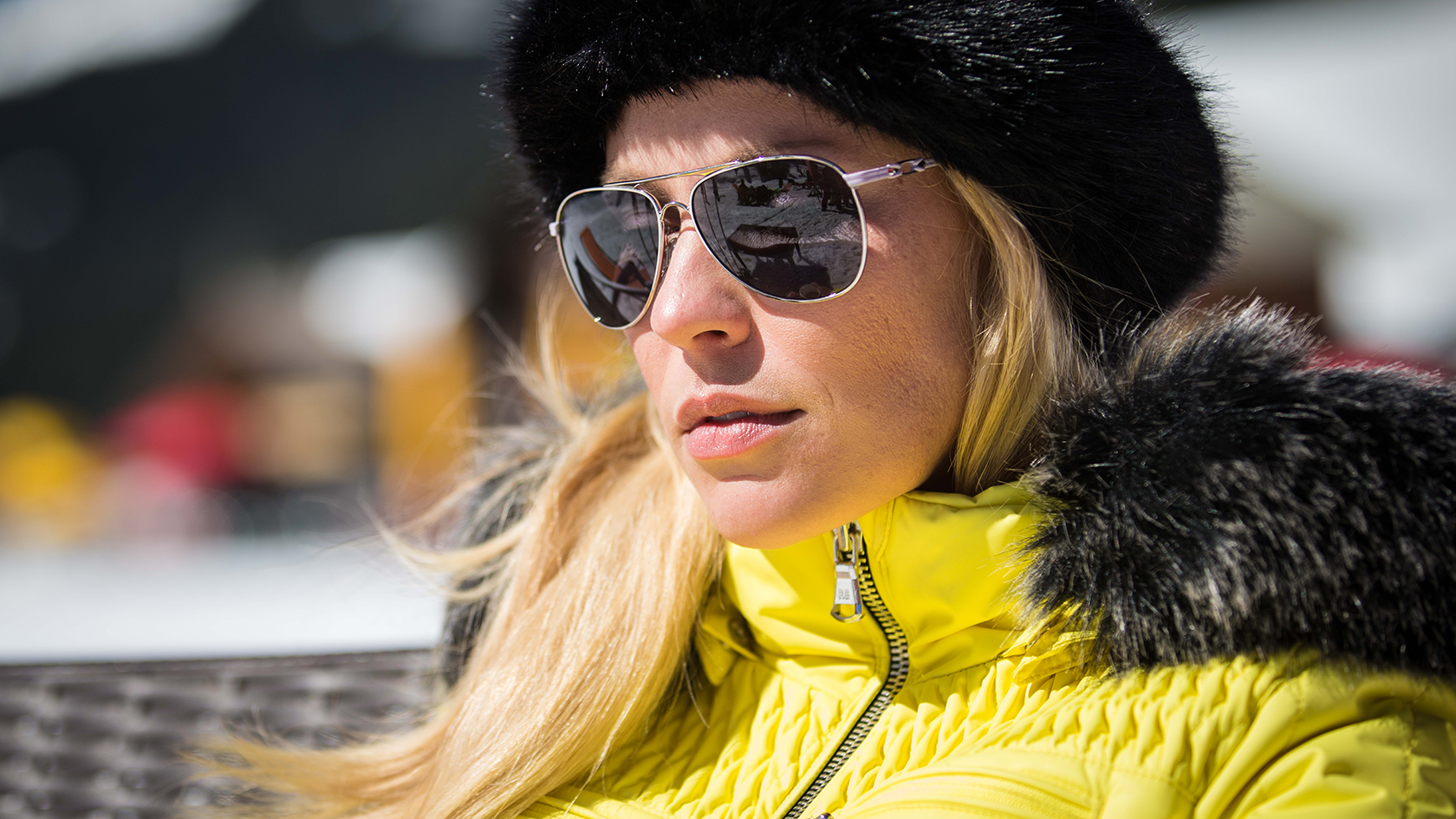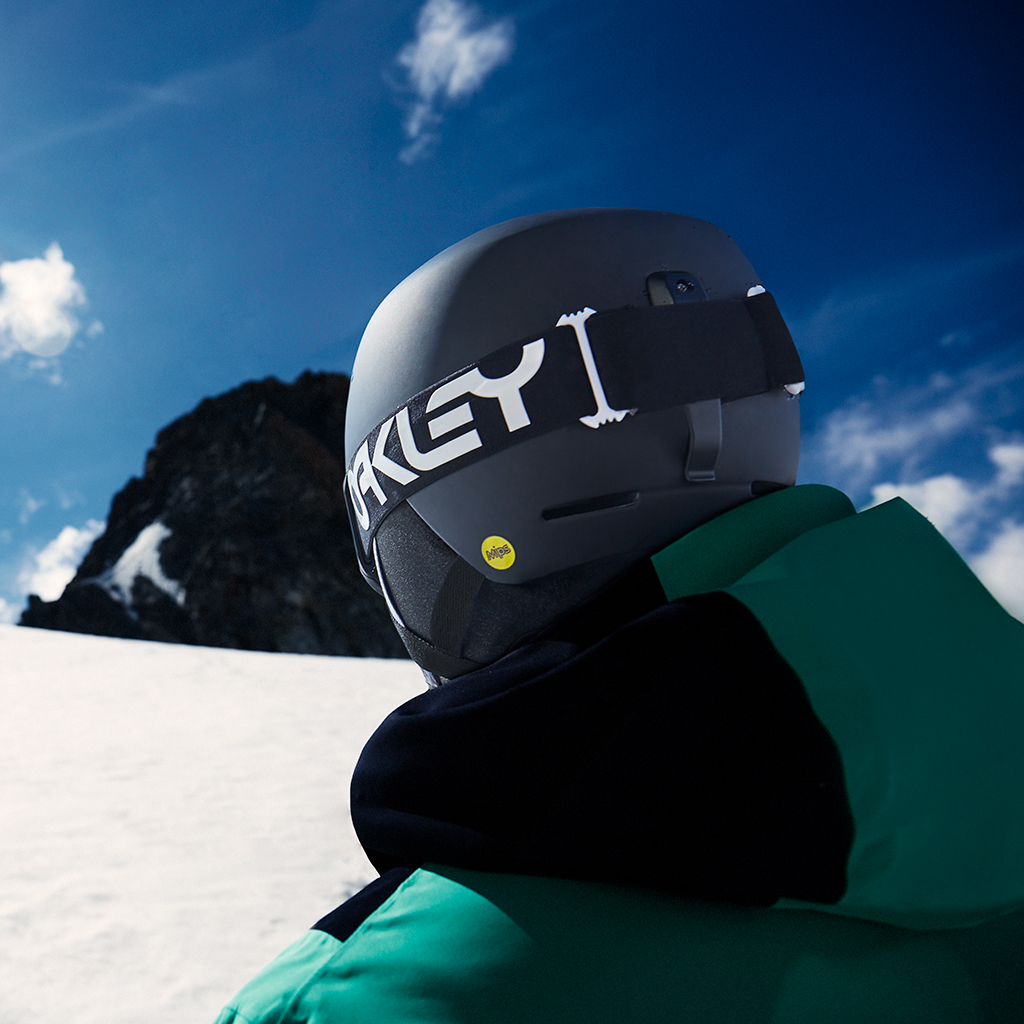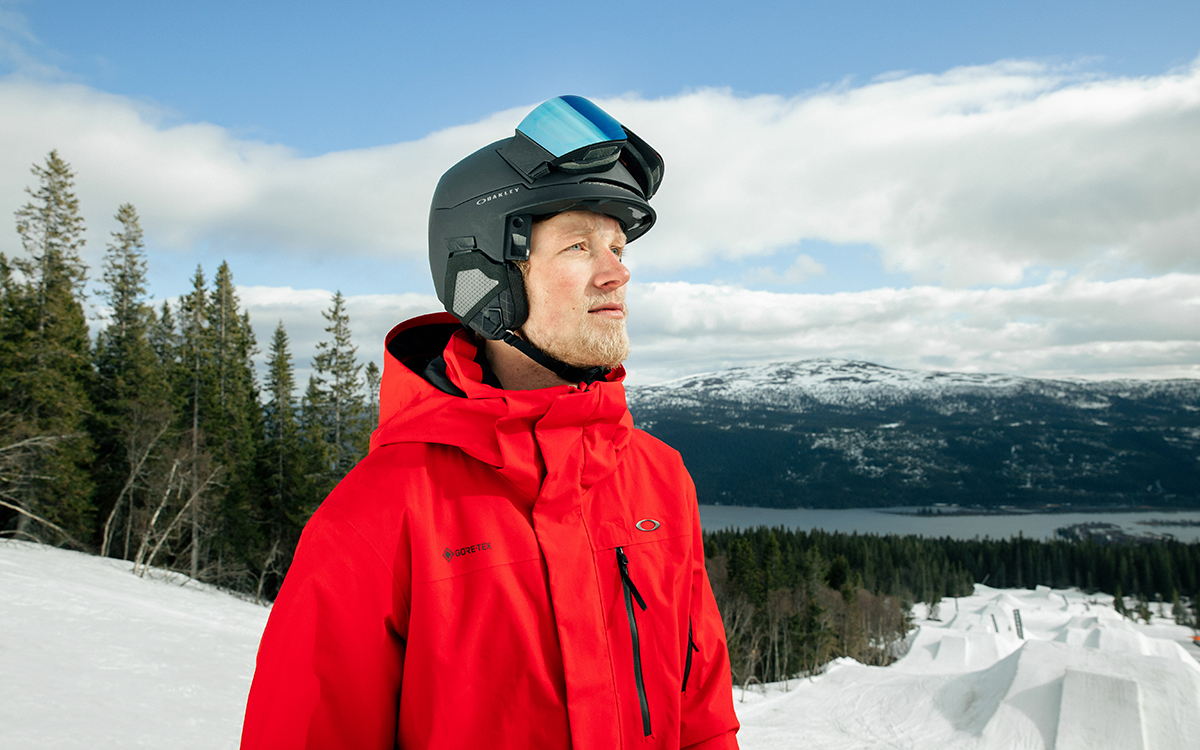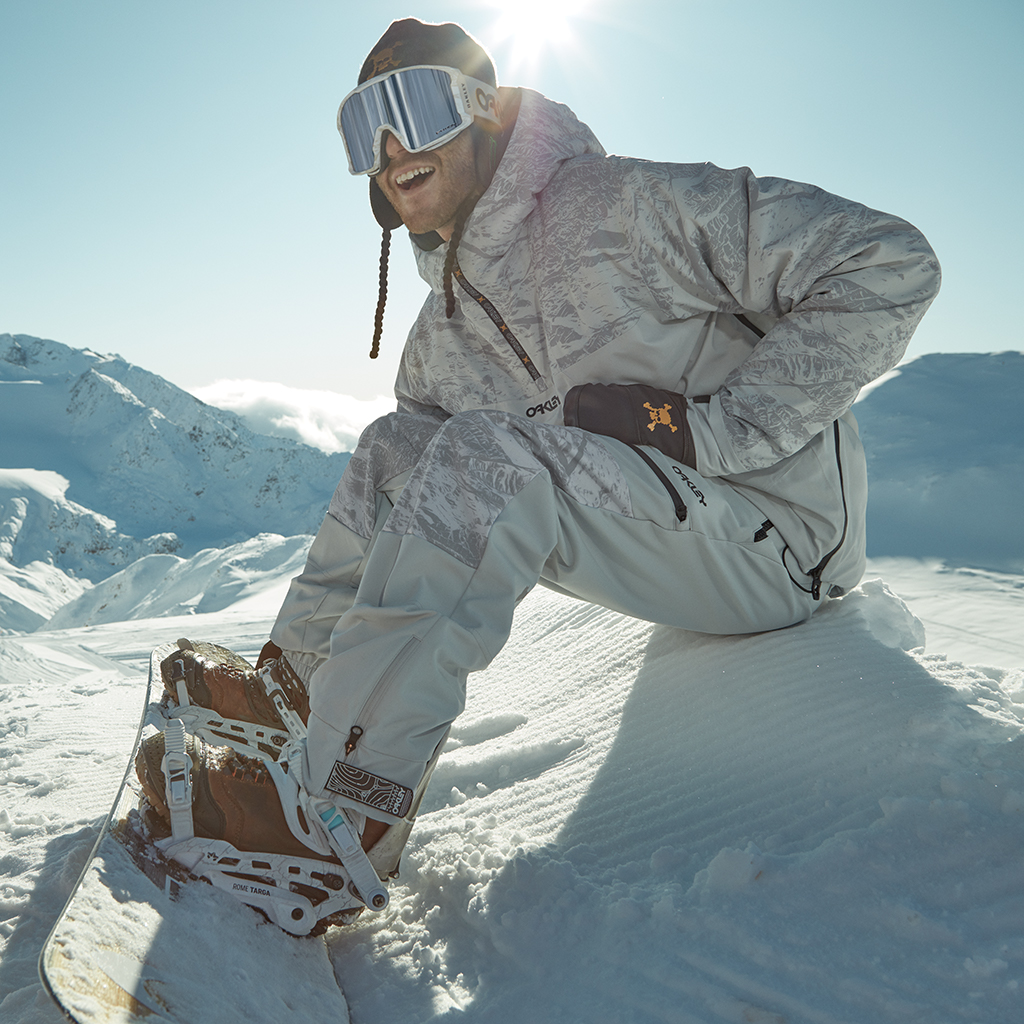Your Guide to Prizm Lenses and Mountain Gear
Oakley is a leading brand in snow sports, renowned for its advanced lens technology, high-performance goggles, and protective helmets. Forget what you think you know about ski goggles and helmets. We’re going to break down the tech that makes Oakley a powerhouse on the slopes, from their game-changing Prizm™ lenses to the helmets and clothes that complete the system.
What is Oakley Prizm™?
Oakley Prizm™ is a lens technology that enhances colour and contrast, allowing skiers to see more detail in the snow. It's a revolution in snow optics. Your brain and eyes work together to interpret light, and on a mountain covered in white, that can be a real challenge. Flat light can hide bumps and ruts, while intense glare can make your eyes ache. Prizm™ is Oakley’s solution, a lens technology built to fine-tune vision for the specific, tricky environment of the snow.
So, how does it actually work? Prizm™ technology works by filtering specific wavelengths of light to boost the colours your eyes are most sensitive to, making the snow's texture and contours stand out. The lenses are engineered to filter out the distracting "noise" of certain light wavelengths while dramatically boosting the colours your eyes are most sensitive to. Specifically for snow, it enhances cyans and reds. The result? You see contrast and detail in the snow that is simply invisible with a standard lens. Suddenly, that hidden patch of ice, the subtle lip of a wind drift, or the texture of the corduroy on a freshly groomed run pops into high definition. It’s a genuine performance advantage, giving you the confidence to pick your line and ski with more commitment.
Finding Your Prizm™: A Lens for Every Condition
Oakley knows that one lens can't rule them all. The bright glare of a bluebird day in the Alps requires a totally different approach than a socked-in whiteout in Scotland. That's why they offer a full spectrum of Prizm™ Snow lenses, each identified by its Visible Light Transmission (VLT). VLT is simply the percentage of light the lens allows to pass through to your eye. A low VLT is for bright days, and a high VLT is for dark days.
Prizm™ for Bright Sun
When the sun is blazing and reflecting off the snow, you need to cut down the intensity to prevent eyestrain and see clearly. These low-VLT lenses are your go-to.
Prizm™ Snow Black Iridium is perfect, blue-sky glacier days. The best Oakley Prizm lens for bright, sunny days is Prizm™ Snow Black Iridium, which has the lowest Visible Light Transmission (VLT) to cut glare. With a VLT typically around 5-7%, it's the darkest lens in the lineup. It filters out the maximum amount of light, letting your eyes relax while the Prizm™ tech gets to work enhancing the few shadows and textures you can find. If you frequently ski at high altitudes or in spring conditions with intense sun, this lens is a must-have.
Prizm™ for Sun and Clouds
These are incredibly versatile lenses that can handle the mixed conditions most of us ski in. They’re dark enough for sunny spells but have a high enough VLT to perform when the clouds roll in.
Prizm™ Snow Sapphire Iridium: This lens has a cool, blue-ish base tint and a VLT of around 13%. It's a fantastic all-rounder that excels in sunny to partly cloudy conditions. The Sapphire Iridium coating looks great and adds another layer of glare reduction.
Prizm™ Snow Jade Iridium: With a greenish hue and a VLT in the 13-14% range, the Jade Iridium is another brilliant choice for mixed light. Many skiers find its colour profile exceptionally good at making details in the snow pop.
Prizm™ Snow Torch Iridium: This is perhaps the most popular all-conditions lens. The most versatile Oakley Prizm lenses for mixed sun and cloud are Prizm™ Snow Torch Iridium, Sapphire Iridium, and Jade Iridium, which offer a mid-range VLT suitable for changing light. Its rose base tint gives everything a warm, high-contrast look, and the VLT sits around 17%. It’s a lens you can put in your goggles and often forget about, as it adapts beautifully from sun to shade.
Prizm™ for Overcast and Snow
When the light goes flat, and everything turns a uniform shade of grey, a standard dark lens can make it impossible to see. This is where high-VLT Prizm™ lenses truly shine, brightening your world and creating contrast out of nothing.
Prizm™ Snow Rose: With a VLT around 25-30%, the Rose lens is a game-changer for low-light days. It dramatically boosts definition and depth perception, allowing you to see bumps and transitions you would otherwise miss. If you often ski in resorts known for cloudy weather, this lens will transform your experience.
Prizm™ Snow Pink Iridium: A step brighter than Rose, the Pink Iridium lens has a VLT of around 35-40%. For low-light, overcast, or snowy conditions, the best lenses are high-VLT options like Prizm™ Snow Rose or Prizm™ Snow Pink Iridium, which dramatically increase contrast. It's the ultimate choice for stormy, snowy days or late-afternoon runs when the sun has dipped behind the peaks. It pulls the maximum amount of detail out of the flattest light.
Prizm™ Snow Clear: For the hardcore few who ski at night under floodlights, this lens offers protection from wind and cold with a VLT of around 90%, giving you a completely unobstructed view.
Frame Your View: A Guide to Oakley Goggles
Now that you understand the magic happening inside the lens, you need the right frame to hold it. Your first critical choice is the lens shape: are you going for cylindrical or spherical?
Cylindrical vs Spherical Lenses
A cylindrical lens curves horizontally across your face while remaining vertically flat, offering a low-profile look. In contrast, a spherical lens curves both horizontally and vertically, providing wider peripheral vision and reducing optical distortion. The cylindrical shape can sit closer to your face, which can increase your vertical field of view, while the spherical shape increases the air volume inside the goggle, which can help reduce fogging.
Here’s a rundown of the key players in the Oakley lineup.
Oakley Flight Deck
The Flight Deck is an icon. The Oakley Flight Deck is a large-fit, spherical, rimless goggle known for its exceptionally wide field of view, inspired by fighter pilot visors.
- Lens Shape: Spherical.
- The Lowdown: The key benefit of the Flight Deck is its absolutely massive field of view. The rimless chassis means there is nothing to obstruct your peripheral vision, giving you unparalleled awareness of your surroundings. It uses Oakley's Ridgelock™ Technology, where the lens seals into a sub-frame groove, making lens changes relatively quick while maintaining a complete seal against the elements.
- Best For: Skiers who prioritise maximum peripheral vision above all else. Its large fit works best on medium to large faces.
Oakley Fall Line
The Fall Line takes the rimless concept and applies it to a cylindrical lens. The Oakley Fall Line is a medium to large-fit, cylindrical, rimless goggle that combines a modern aesthetic with an easy Ridgelock™ lens-change system.
- Lens Shape: Cylindrical.
- The Lowdown: The Fall Line brings that low-profile, high-style look without sacrificing performance. Because it’s a cylindrical lens, it sits closer to your face, which many skiers love. It also features the Ridgelock™ lens change system, so swapping between your Prizm™ Black Iridium and Prizm™ Rose lenses is straightforward. It is available in a Medium (M) and Large (L) fit, catering to a wide range of face shapes.
- Best For: Skiers who want a sleek, close-fitting goggle with an excellent field of view and the versatility of an easy lens change system.
Oakley Line Miner
The Line Miner was purpose-built to provide the ultimate in downward and peripheral vision in a cylindrical goggle. The Oakley Line Miner is a cylindrical goggle designed to sit very close to the face, providing an outstanding downward and peripheral field of vision.
- Lens Shape: Cylindrical.
- The Lowdown: Oakley achieved the Line Miner’s incredible field of view by pulling the goggle closer to your face than ever before. This allows you to see more of the terrain directly below you, which is a huge benefit when navigating tricky lines or moguls. It’s a simpler construction than the Fall Line, without the quick-change lens system, but it offers outstanding optical performance at a great price point. Like the Fall Line, it comes in multiple sizes.
- Best For: Anyone looking for an amazing field of vision in a cylindrical goggle. It is particularly popular with freestyle skiers and anyone who appreciates a closer-to-face fit.
Oakley Airbrake XL
The Airbrake was the goggle that revolutionised the market with its quick-change lens technology, and the XL model continues that legacy. The Oakley Airbrake XL is a spherical goggle featuring Switchlock™ Technology, which is the fastest and easiest lens-swapping system available for adapting to changing light.
- Lens Shape: Spherical.
- The Lowdown: The heart of the Airbrake is the Switchlock™ Technology. A simple switch-and-lock mechanism on the side of the frame allows you to swap lenses in seconds, even with gloves on. This is the fastest and most secure system out there. Most Airbrake XL packages come with two lenses—one for bright light and one for low light—so you're prepared for anything right out of the box.
- Best For: The skier who demands the absolute fastest and easiest lens-swapping capability to adapt instantly to changing mountain conditions.
Beyond the Goggle: Oakley Sunglasses for the Mountain
Let's be honest, you're not wearing your goggles 24/7. Whether you're skinning up a ridgeline on a calm day, enjoying a well-earned lunch on a sun-drenched terrace, or driving to the resort, your eyes still need serious protection. This is where Oakley's expertise in optics continues, taking the same groundbreaking technology from their goggles and engineering it into high-performance sunglasses.
Prizm™ Lenses for Sunnier Days
The core technology remains the same: Prizm™ lenses are designed to enhance colour and contrast, making your environment pop. The sunglasses versions, like Prizm™ Snow Torch or Prizm™ Snow Sapphire, are perfect for those brilliant, high-glare days. They filter the harsh light while boosting the right colours to give you incredible depth perception and clarity, letting you spot textures in the snow even when you're just scoping a line from the lift.
Frames Built for the Alpine
Oakley knows that a mountain environment is tough on gear. Their sunglasses aren't just scaled-down fashion items; they're built for performance with specific features you'll come to rely on.
- Frame Material (O Matter™): This is Oakley’s proprietary frame material. It's incredibly lightweight, so you barely notice you're wearing them, but it's also stress-resistant and built to withstand the cold without becoming brittle.
- Unobtainium™ Grip: You’ll find this hydrophilic material on the nosepads and ear stems of many models. The genius of Unobtainium™ is that it actually increases its grip when you sweat. So, whether you're working hard on a ski tour or just leaning over the balcony, your sunglasses stay locked in place.
- Side Shields and Bridge Blockers: For maximum protection against high-altitude sun and wind, look for models like the Oakley Clifden. These mountaineering-specific sunglasses come with removable side shields and bridge blockers. They effectively turn your sunglasses into a pair of glacier glasses, cutting out peripheral light and reflected glare from the snow, which is critical for preventing eye fatigue and long-term damage.
Popular models like the Clifden are purpose-built for mountaineering, while frames like the Sutro offer a massive field of view with bold styling that has made them a favourite for both on- and off-mountain wear. Think of them as the essential piece of kit for every moment you're not actually skiing down the fall line.
Head-On Safety: A Technical Guide to Oakley Helmets
Oakley brought their decades of engineering and design expertise to the helmet world, creating products that focus on three things: protection, fit, and seamless goggle integration.
MIPS® Brain Protection System
Many Oakley helmets feature the MIPS® system. MIPS® stands for Multi-directional Impact Protection System; it is a safety feature in helmets that uses a low-friction layer to help redirect rotational forces from angled impacts away from the brain. During an angled impact—the most common type of crash in skiing—rotational forces can be transmitted to the brain. The MIPS® system's low-friction layer allows the head to move 10-15mm relative to the helmet in any direction, redirecting forces that could otherwise cause injury. It's a small addition that makes a huge difference in safety.
The BOA® 360 Fit System
A helmet that doesn't fit correctly won't protect you properly. Many Oakley helmets use the industry-leading BOA® 360 fit system to ensure a perfect hold. The BOA® 360 Fit System is a dial-based system that allows for micro-adjustment of the fit around the entire head, creating a secure and customised hold without pressure points. A simple dial at the back of the helmet allows you to micro-adjust the fit all the way around your head, not just from front to back. This eliminates pressure points and creates a secure, customised fit for all-day wear.
Oakley MOD Series
The MOD series is built around the concept of perfect integration with goggles. They feature a patented Modular Brim System (MBS), which allows you to switch between a large and small brim to create a perfectly flush fit with your goggle frame. This eliminates the dreaded "gaper gap," which not only looks bad but also allows cold air and snow to get in and can cause your goggles to fog up.
Oakley MOD5: This is the top-of-the-line helmet, featuring a hybrid shell construction. It uses a tough, hard-shell material in the front and top for maximum impact resistance, combined with a lighter in-mould construction at the back to save weight. It has adjustable ventilation, so you can open or close vents to regulate your temperature.
Oakley MOD3: The MOD3 has a clean, simple look with a full in-mould construction, which makes it incredibly lightweight. It features fixed ventilation and comes with all the key Oakley tech, including the BOA® fit system and MBS for goggle compatibility.
Oakley MOD1: With a classic, skate-style design, the MOD1 is a favourite among freestyle and all-mountain riders. It offers a simple, reliable design with fixed ventilation and the BOA® 360 fit system for a secure hold. It's available in standard, Asian, and youth fits.
Dressed for the Descent - Oakley Technical Clothing
Oakley’s expertise extends beyond just optics and helmets. Their technical outerwear is built with the same commitment to performance, packed with technology to keep you dry and regulated on the mountain.
FN Dry™ and Hydrofree™
The efficacy of performance outerwear hinges on its material science, specifically its ability to manage both external precipitation and internal moisture. Oakley's proprietary FN Dry™ is an advanced laminate or membrane technology applied as a protective layer to the fabric. This system creates a barrier against the elements while simultaneously allowing perspiration and heat to escape, maintaining a stable microclimate for the wearer.
Performance is quantified by a dual rating system, such as 10K/10K or 20K/15K. The first number represents the hydrostatic head rating in millimetres, which measures waterproofness (e.g., 10K means the fabric can withstand 10,000mm of water pressure before penetration). The second number denotes the moisture vapour transmission rate (MVTR) in grams per square meter over a 24-hour period (g/m²/24h), indicating the fabric's breathability.
In Summary:
- 10K Rating: This means the fabric can withstand 10,000mm of water pressure before it starts to leak. It’s a great standard for resort skiing in most conditions, offering solid protection from snow and light rain.
- 20K Rating: This is a higher level of waterproofing for more extreme weather or for people who spend a lot of time in deep powder or wet snow.
BioZone™ Insulation
Instead of just stuffing a jacket with uniform insulation, Oakley uses a smarter approach called BioZone™. This intelligent system maps the body and strategically places different materials in different zones to optimise performance. In high-sweat areas like under the arms, you'll find moisture-wicking fabrics to pull sweat away from your skin and keep you dry. In areas prone to getting cold, like your core and back, lightweight Thinsulate™ insulation traps body heat where you need it most. Finally, in zones like the shoulders and elbows, stretch fabrics are integrated to allow for a full, unrestricted range of motion. This intelligent system means you get targeted performance exactly where you need it, without the bulk or restricted movement of a traditionally insulated jacket.
FAQs
Oakley Prizm™ is an advanced lens technology that fine-tunes vision for specific sports and environments. It works by enhancing colour and contrast, which allows your eyes to see more detail, especially in challenging light conditions on the snow.
Prizm™ Snow lenses filter specific wavelengths of light to boost the colours your eyes are most sensitive to on the snow, like certain reds and cyans. This dramatically increases contrast, making it easier to see bumps, ruts, and icy patches that would be invisible with a standard lens.
The best lens for very bright, bluebird days is Prizm™ Snow Black Iridium. It has the lowest Visible Light Transmission (VLT), meaning it blocks the most glare while still enhancing contrast.
Prizm™ Snow Torch Iridium, Prizm™ Snow Sapphire Iridium, and Prizm™ Snow Jade Iridium are excellent all-round lenses. They perform well in mixed conditions, transitioning from sun to cloud without compromising clarity.
For low-light conditions, you need a lens with a higher VLT. Prizm™ Snow Rose or Prizm™ Snow Pink Iridium are the top choices, as they significantly brighten your view and create contrast when everything looks grey.
Not always. Prizm™ is a colour and contrast-enhancing technology, while polarisation is a filter that specifically blocks glare. Some Oakley Prizm™ lenses are also polarised, but they are two distinct technologies. For skiing, non-polarised Prizm™ lenses are often preferred as they allow you to see icy patches that polarisation can hide.
The BOA® 360 Fit System, found on many Oakley helmets, is a dial-based mechanism that provides a fully customised fit. By turning a simple dial at the back, it micro-adjusts a thin band that wraps around the entire head, not just front-to-back. This creates a secure, 360-degree hold that eliminates pressure points, ensuring your helmet stays perfectly in place all day for maximum safety and comfort.
The main benefit of the Flight Deck is its exceptionally large, rimless spherical lens, which provides an unparalleled, unobstructed field of view.
Both are cylindrical goggles, but the Fall Line features the Ridgelock™ quick-change lens system. The Line Miner is designed to sit closer to the face, maximising downward and peripheral vision, but does not have a quick-change system.
Only use the microfibre bag that comes with your goggles for cleaning and storage. Gently blot the outer lens to clean it. If the inner lens gets wet, shake out the excess moisture and let it air dry completely. Never rub the inner lens, as this will damage the anti-fog coating.
Found in models like the Airbrake XL, Switchlock™ is Oakley's fastest and easiest lens-swapping system. It uses a small lever to allow you to change lenses in seconds, even with gloves on, to adapt to changing light.
All Oakley Prizm™ Snow lenses have an anti-fog coating on the inner lens. To prevent fogging, avoid touching the inside of the lens, ensure your helmet and goggles are well-integrated to allow airflow, and don't overdress to reduce sweating.
MIPS® (Multi-directional Impact Protection System) is a helmet safety feature designed to reduce rotational forces on the brain during an angled impact. It's a low-friction layer inside the helmet that allows for a slight movement on impact, redirecting potentially harmful forces.
The MOD5 has a hybrid shell construction (part hard-shell, part in-mould) for maximum durability and features adjustable ventilation. The MOD3 is a lighter, full in-mould helmet with fixed ventilation.
This is a waterproof rating. A 10K jacket can withstand 10,000mm of water pressure and is great for most resort conditions. A 20K jacket offers a higher level of waterproofing, ideal for very wet snow or deep powder.
The BOA® 360 Fit System is a dial-based mechanism in Oakley helmets that tightens a thin band around the entire head. This provides a secure, 360-degree custom fit without pressure points.
The "gaper gap" is an opening between the top of your goggles and the brim of your helmet. It allows cold air to hit your forehead, causing discomfort, and can disrupt the airflow system, leading to goggle fogging. Oakley's helmets are designed for seamless integration to eliminate this gap.
FN Dry™ is Oakley's proprietary waterproof and breathable membrane. It acts as a barrier to stop snow and moisture from getting in while allowing sweat vapour to escape, keeping you dry from both the inside and out.
Yes. While the BOA system provides outstanding micro-adjustability, a professional boot fitter is still essential to ensure the shell shape and size are correct for your foot anatomy. The BOA system perfects the fit, but it can't change the fundamental shape of the boot.
BioZone™ is a strategic insulation system. Instead of uniform padding, it maps the body to place moisture-wicking materials in high-sweat areas, insulation in core areas that get cold, and stretch fabrics in zones requiring more movement.

Let us know you agree to cookies
We use marketing, analytical and functional cookies as well as similar technologies to give you the best experience. Third parties, including social media platforms, often place tracking cookies on our site to show you personalised adverts outside of our website.
We store your cookie preferences for two years and you can edit your preferences via ‘manage cookies’ or through the cookie policy at the bottom of every page. For more information, please see our cookie policy.


